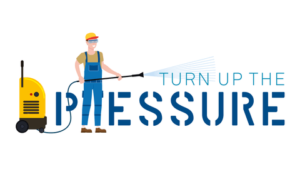
Pressure washers are a fantastic method of cleaning, and cleaning the exterior of a car is much easier if you have one. It makes sense to try to clean your engine with a pressure washer, but it’s important to do it in a safe manner.
Engines can be cleaned with a pressure washer. To do it safely, it needs to be on a low-pressure setting, at a warmer temperature, held about three feet from the engine bay. A spray setting will also be safer than a jet setting. High pressure risks damage to the engine.
Following those instructions, cleaning an engine is fairly safe, but if you want to be sure you won’t trash your car, this article will cover the risks in pressure washing your engine, and the strategies for avoiding those risks.
Know the risks
Water is a destructive element. Moving water makes it more destructive. Water cut the Grand Canyon from the Earth, and breaks all things down over time. Pressure washers utilize this destructive power to clean things. They effectively break down the buildup dirt and grime on the outside of your car, and can just as effectively clean the grime out of your engine.
The problem is, the outside of your car is intended to keep water out, and while most of the interior of your engine bay is equipped to withstand an occasional splash or drip, they are not equipped to withstand constant high-pressure water flow.
Air filters can get wet, and then take far too long to dry, leaving them moldy or otherwise damaged, which can make your car driving experience much less enjoyable.
The battery may start to take on water, damaging the integrity of the transfer of energy. All of the electronic components in the engine bay run the risk of fatal water damage when pressure washing is introduced.
All of the moving parts of an engine require lubrication which can be removed by the high pressure, which can cause serious malfunction in the engine over time.
If water manages to get into the engines oil, which is highly possible with the use of high pressure, even more serious problems can occur. Watery oil won’t cool correctly, and will increase friction, causing internal engine damage early on, and will eventually lead to total engine failure.
These problems are really just the tip of the iceberg—pressuring washing an engine incorrectly can absolutely destroy your car. For a more in-depth definition of the risks, I’ve attached a video that goes over potential issues with both new and old vehicles.
Beauty vs. Function
Many car owner’s manuals say nothing regarding the cleaning of the engine bay. This is because for most car owners it isn’t really necessary. So before using a pressure washer on your engine you might consider is it’s only cosmetic or if it is necessary for the function of the car. If it’s just cosmetic, is it really worth the risk?
Cleaning your engine bay may be a good idea if you live in an area with harsh winters where roads are salted. The salt can cause engine damage if not addressed, so cleaning the engine bay becomes necessary for you. A pressure wash can make this a great deal easier for you.
A common misconception is that your car will run better with a clean engine. This simply isn’t true. While there is some debate regarding whether or not a person should clean their engine, mechanics will tell you that there isn’t any benefit to the engine bay of your car being clean. Some say that it is never a good idea, and some say that it is an important point of pride—that the clean engine indicate pride in their work.
Even the areas where salt damage can be a major cause of concern, cleaning the engine bay is about ensuring preventing damage, not improving performance. A clean engine bay won’t make your car run any better than a new paint job would.
The right pressure washer
Many of the components in an engine are rated on system that states their protection from dust and water. This is called the IP Code.
Many pressure washers have ratings that coincide with the IP Code. A pressure washer may be rated IP5, meaning that for a car component rated at IP5 or above, that pressure washer will be safe to use. Because most pressure washers can change pressure based on the nozzle type, there is a little bit of leeway regarding what type of pressure washer you use.
Looking at the components in your engine bay, you should be able to find their IP rating. If you can’t, it is safe to assume that the component you are looking at is rated below IP5.
That doesn’t mean you can’t pressure wash your engine bay with a pressure washer, it just means that you will have to take some extra steps to make sure that your car will be safe.
Preparing for cleaning
To prepare the engine for safe cleaning, you will need plastic bags to cover anything especially susceptible to electronic damage.
Wrap up and tie off your engine’s distributor, as well as the alternator. Then wrap any electrical components without a sufficient IP rating. While these bags will help protect, it’s important to steer clear of drawing to close to the components they contain.
Pick the mildest chemical capable of cleaning the engine. If it’s grimy and disgusting, pick a heavier one, but if it’s just dusty, go as mild as you can. Being careful is key to ensuring the safety of your vehicle.
You may still need a small brush to clean any difficult to reach places, and have towels ready because you should dry your engine bay immediately after washing. A protective product like this one is also important to have.
Cleaning the engine
Now that you have all of the materials, you are ready to go through the steps to clean your engine.
1) Make sure the engine isn’t hot: A warm engine is no big deal, but a hot engine is a threat to you, as it risks burns, as well as a potential issue for the engine, because cold water sprayed on a hot engine can cause cracking in the metal.
2) Bag the components you need to bag: The pressure washer will damage susceptible components if they aren’t protected.
3) Apply the cleaner: Thoroughly coat the engine bay in the cleaner that you are using for your vehicle, scrubbing areas that may need extra help. Allow to sit and soak for a few minutes before moving to the next step.
4) Use the pressure washer: It’s time to rinse the whole engine bay. Make sure you hold the washer a good 3 feet away from the engine to be sure no damage occurs.
5) Dry and remove bags: Dry the engine then remove the plastic bags so no water can damage the covered components.
6) Apply the protective coating: The protective coating will help the engine stay clean longer, as well as defending against potential damage.
With that, you’re ready to use your pressure washer to clean your engine bay. Follow these steps, and you shouldn’t run into any problems with the wash.
Is all of this work necessary?
The internet is full of examples of people using pressure washers to clean their engine bay. It’s simply the most efficient method of cleaning that area of the car. With that many examples, you are bound to find different types of results.
If you go to YouTube and look for instructions on how to clean your engine bay with a pressure washer, you will find videos that follow the exact steps I detailed here, videos that only do part of what I wrote, and videos of people going to a car wash with a self-serve pressure washer, popping the hood, and letting loose on the engine. Many of them see no negative results.
But for every successful nonchalant engine washing, there are many more stories of people who tried the same thing, and are now looking at thousands of dollars in maintenance fees for a car that they can’t even drive anymore.
You may even find some videos from different mechanics, showing their engine bay cleaning process to be much simpler than the one I suggested, but you have to remember that mechanics have equipment that the everyday person doesn’t. They can remove parts to blow out the extra water. They can drain the oil from the car if water finds its way in. For home cleaning, the method that I have suggested is the safest possible method.
I think that having a clean engine bay takes the car’s aesthetic to a whole new level, and I think that if it is done safely, it is absolutely worth the effort required to make it happen. But taking short cuts to get there isn’t worth it.
